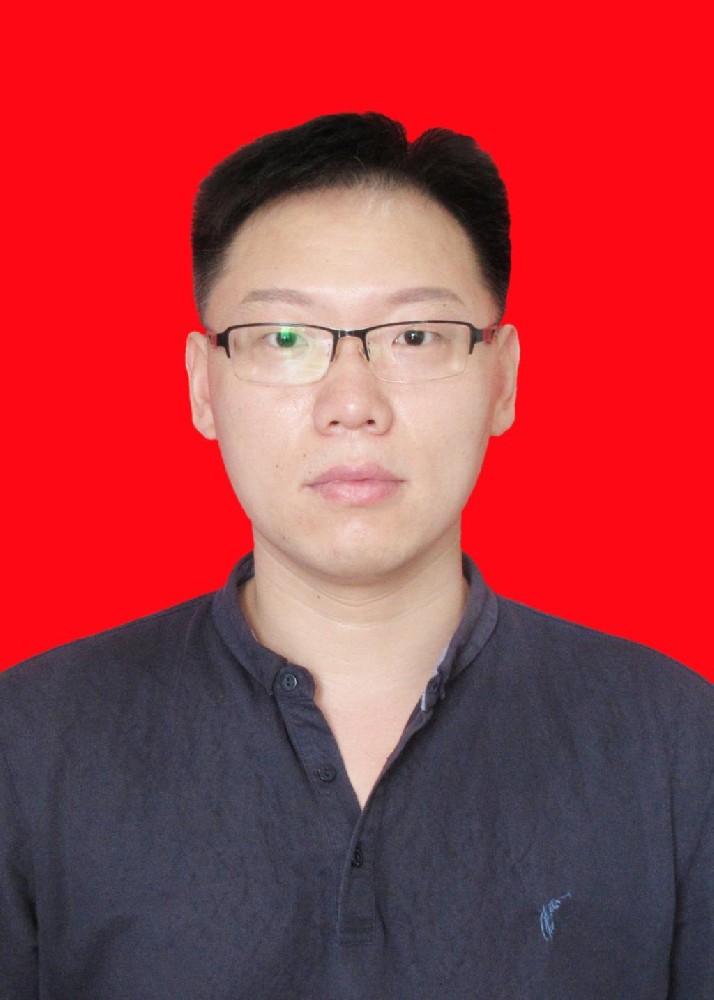
胡劲松,博士,教授,博士生导师,中国化学会会员,安徽省高校骨干领军人才,安徽省杰出青年科学基金获得者,校应用化学学科带头人,校青年拔尖人才,校中青年学术骨干,现任化学工程学院党委委员、副院长。2011年6月毕业于南京大学配位化学国家重点实验室,同年7月进入安徽理工大学化学工程学院从事教学及科研工作,2015年11月-2017年6月在KAUST催化中心从事博士后研究。
主要从事框架材料设计及其在荧光传感、新能源催化转化领域应用。主持国家自然科学基金2项,主持安徽省高校骨干领军人才项目、安徽省科技厅杰出青年基金等省部级项目8项。近年来,以第一或通讯作者身份在Nano Energy, Sci. China Chem., Chem.Comm., Sens. Actuators B Chem., Electrochim. Acta, Inorg. Chem., Cryst. Growth Des., Micropor. Mesopor. Mat.等学术期刊上发表论文70余篇;授权发明专利7项。担任Nano Energy, Chem Eng. J., Chem.Comm., Sens. Actuators B Chem.等知名杂志审稿人。主持教研项目2项,发表教研论文4篇;指导国家级大学生创新训练计划项目3项。
电子邮箱:jshu@aust.edu.cn
研究方向
金属-有机框架材料设计及荧光传感性能研究,金属-碳基复合材料设计及能源催化转化研究,金属-有机化学。
研究项目
[1] 国家自然基金面上项目,Pincer基荧光金属-有机框架材料对硝基爆炸物选择性检测,2017.01?2020.12;
[2] 安徽省高校骨干领军人才:2020.07?2023.07;
[3] 安徽省自然科学杰出青年基金:2019.07?2022.07;
[4] 国家自然科学基金青年项目,Mo(W)-S-Cu原子簇-有机框架材料的设计合成及异相催化性能研究,2014.01?2016.12;
[5] 中国科学院光化学转换与功能材料重点实验室开放基金,荧光金属-有机框架材料对硝基爆炸物选择性检测,2018.06?2019.06;
[6] 安徽省国外访学基金重点项目,2016.01?2018.12;
[7] 校青年拔尖人才基金,2016.01?2018.12;
[8] 安徽省自然科学基金青年基金,2016.01?2018.12;
[9] 配位化学国家重点实验室开放基金,2013.01?2015.12。
论文论著
[1] Xiaoyu Wang, Qingqing Li, JinsongHu*, Chuihui Zhou, Sixin Yang, Xinhua Huang, Coordination confinement pyrolysis to hollow sea urchin shaped composite with embedded ultrasmall Co/Ni alloy for overall water splitting, International Journal of Hydrogen Energy, 2022, 47, 3699-3708.
[2] Qingqing Li, Jinsong Hu*, Xiaoyu Wang, Sixin Yang, Xinhua Huang, Xiaofei Cheng, Coordination confinement pyrolysis to lower-like nanocomposites composed of ultrathin nanosheets with embedded ultrasmall CoP nanoparticles for overall water splitting, Applied Surface Science, 2021, 569, 151099.
[3] Xiaolong Zhang, Jinsong Hu*, et al. Double metal–organic frameworks derived Fe-Co-Ni phosphides nanosheets as high-performance electrocatalyst for alkaline electrochemical water splitting, Electrochimica Acta, 2021, 367, 137536.
[4] Ke Wu, Jinsong Hu*, et al. A thermal stable pincer-MOF with high selective and sensitive nitro explosive TNP, metal ion Fe3+ and pH sensing in aqueous solution, Dyes and Pigments, 2020, 173, 107993.
[5] Xiaofei Cheng, Jinsong Hu*, et al. Tunable emission and selective luminescence sensing for nitro-pollutants and metal ions based on bifunctional lanthanide metal-organic frameworks, J. Lumin., 2020, 221, 117100.
[6] Ke Wu, Jinsong Hu*, et al. A superior luminescent metal-organic framework sensor for sensing trace Al3+ and picric acid via disparate charge transfer behaviors, J. Lumin., 2020, 219, 116908.
[7] Jiaxin Li, Jinsong Hu*, et al. pH stable cationic luminescence Metal-Organic framework material with nitrate guests as high selective sensor for detecting 2, 4, 6-trinitrophenol, J. Solid State Chem., 2020, 290, 121583.
[8] Jinsong Hu*, Shengju Dong, Mingdong Zheng,* An ultrastable magnesium–organic framework as multi-responsive luminescent sensor for detecting trinitrotoluene and metal ions with high selectivity and sensitivity, Sens. Actuators B Chem., 2019, 283, 255–261.
[9] Chaonan Lv, Lei Zhang,* Jinsong Hu*, et al. Band engineering of Ag-Bi12GeO20-Bi2WO6 composite photocatalyst: Interface regulation and enhanced photocatalytic performance, Ceram. Int., 2019, 45, 5249–5258.
[10] Xiaolong Zhang, Jinsong Hu*, et al. A chiral zinc(II) metal-organic framework as high selective luminescent sensor for detecting trace nitro explosives picric acid and Fe3+ ion, J. Solid State Chem., 2019, 269, 459–4643.
[11] Chaonan Lv, Lei Zhang,* Jinsong Hu*, et al. Partial chemical conversion strategy for the synthesis of novel Ag-Bi7O9I3-Bi25VO40 heterostructure with improved photocatalytic activity, Ceram. Int., 2019, 45, 6804–6811.
[12] Jinsong Hu*, Tingting Cheng, Lei Zhang*, Multifunctional luminescent Cd (II)-based metal-organic framework material for highly selective and sensitive sensing 2,4,6-trinitrophenol (TNP) and Fe3+ cation, Micropor. Mesopor. Mat., 2018, 272, 177–183.
[13] Lei Zhang, Jinsong Hu*, Shiyuan Lu,* Particle-in-box nanostructured materials created via spatially confined pyrolysis as high performance bifunctional catalysts for electrochemical overall water splitting, Nano Energy, 2018, 48, 489–499.
